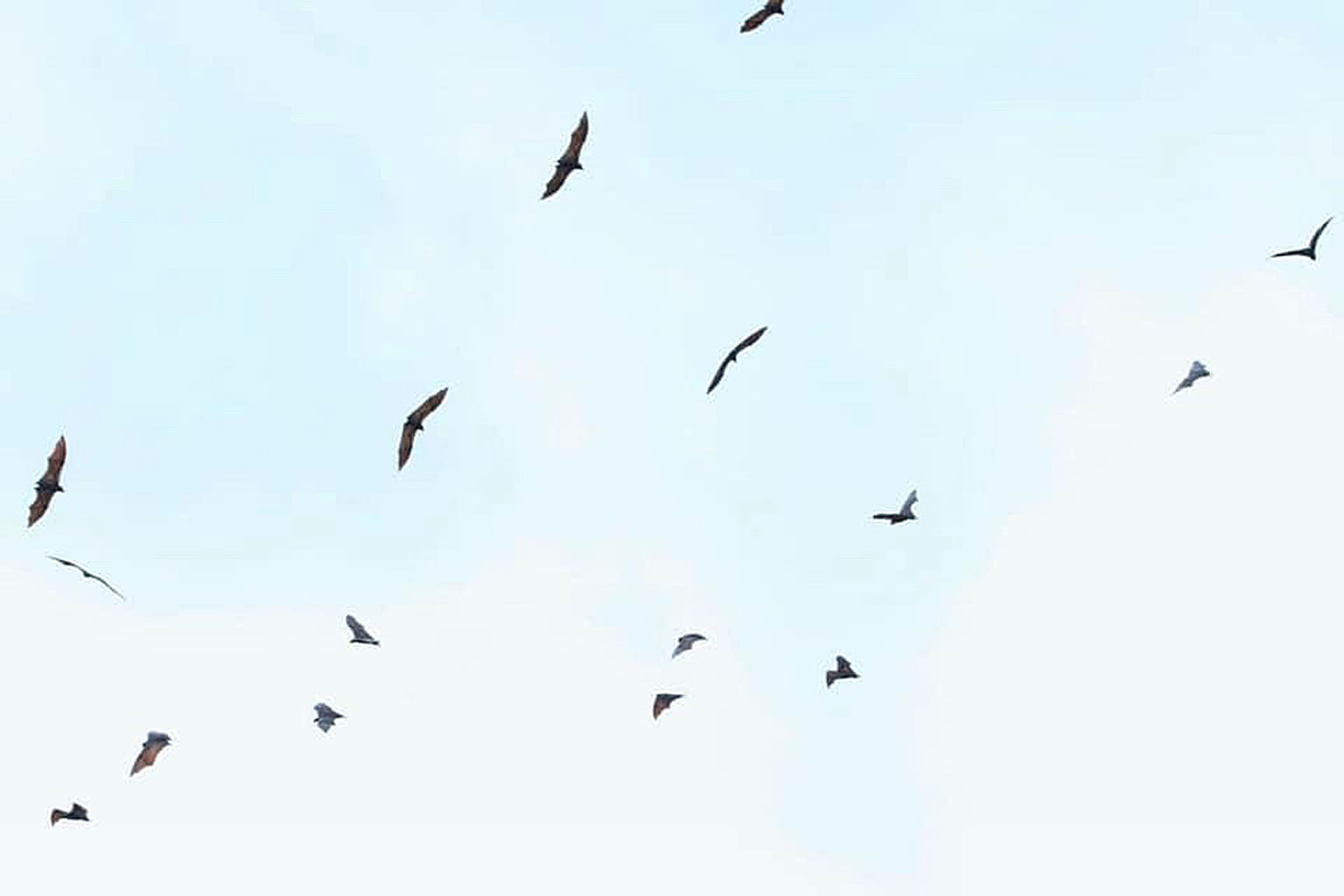100 large flying foxes spotted on World Environment Day
Sign up now: Get ST's newsletters delivered to your inbox

A colony of over 100 large flying foxes was seen soaring over the Central Catchment Nature Reserve last Friday, in a rare sighting of the fruit bats native to Singapore. The last time such bats were seen in Singapore was more than four years ago.
PHOTO: SABRINA JABBAR
Audrey Tan Environment Correspondent, Audrey Tan
Follow topic:
World Environment Day, which falls on June 5 every year, was made more memorable in Singapore with a rare sighting last Friday: a colony of over 100 large flying foxes soaring over the Central Catchment Nature Reserve.
The last time such bats were seen in Singapore was more than four years ago, when six were sighted in the MacRitchie area in May 2016.
Dr Benjamin Lee, director of wildlife management research at the National Parks Board (NParks), said: "This sighting of more than 100 individuals is unprecedented in Singapore in recent times."
Primate researcher Sabrina Jabbar caught sight of the bats while exercising in the nature reserve at about 7.30am last Friday, and captured the encounter in photographs and videos.
Ms Jabbar said the sighting on World Environment Day was a great surprise. "It was such a magnificent sight against the backdrop of the cloudy sky," she added.
Dr Lee said the large flying fox, a fruit bat, is native to Singapore.
They are migratory animals, which means they have a large home range and move frequently across international borders.
They have been known to travel several hundreds of kilometres between roosting sites, and their home range includes southern Peninsular Malaysia, Singapore and Sumatra in Indonesia, said Dr Lee.
"It is not unusual for flying foxes to travel in large groups when they are in search of food or due to disturbances to their camps such as habitat destruction or sustained hunting," he added.
Ms Jabbar said that while it was nice to see the flying fox in such large numbers, the animals may have been forced to move due to threats faced elsewhere, such as habitat loss. "I hope they have found a safe place to settle," she said.
The large flying fox is one of 28 species of bats in Singapore.
These creatures of the night have been linked to the emergence of zoonotic diseases such as Covid-19, but NParks, which has been studying Singapore's bat populations since 2011, said the coronavirus that causes Covid-19 in humans has not been detected in bats and other animals here.
Often depicted negatively in popular fiction, fruit and insectivorous bats in fact play important ecological roles in the natural environment.
Fruit bats are pollinators and seed dispersers, and play an important role in regenerating forests and ensuring their survival. The agricultural trade is also supported by bats that aid in the pollination of plants like durian and petai, said Dr Lee.
Insectivorous bats, on the other hand, are the pest controllers of the natural world.
Dr Lee said: "They feed on mosquitoes, beetles and crickets, helping to keep the insect population in check.
"By feeding on insects, they also help to support agriculture, as they reduce the damage the insects cause to crops, as well as decrease the need for pesticides."
Bats are generally shy and do not attack or show aggression unless a person attempts to handle them, said Dr Lee. People should not attempt to feed or get close to them.
"NParks will continue to closely monitor the local wildlife populations," he added.

